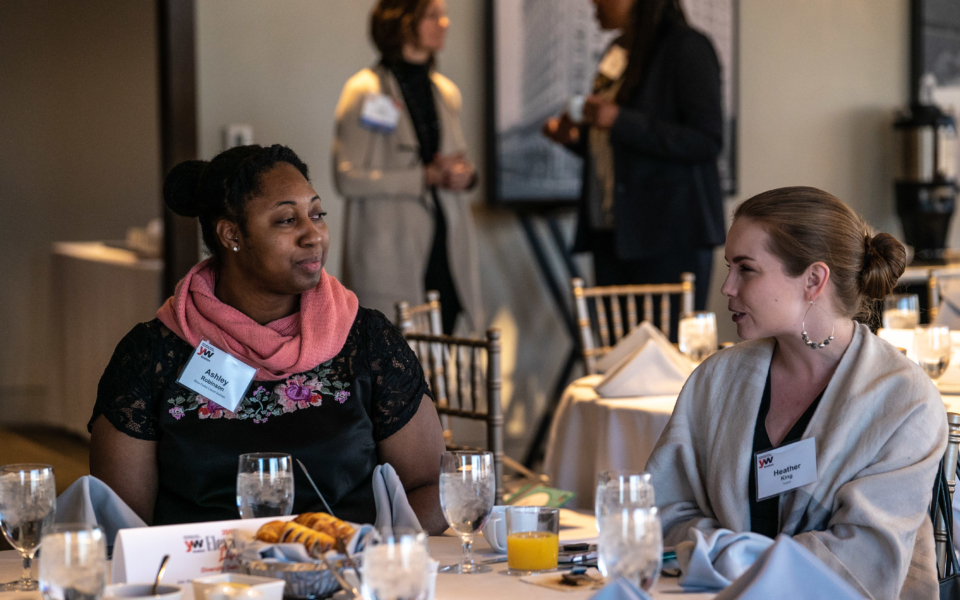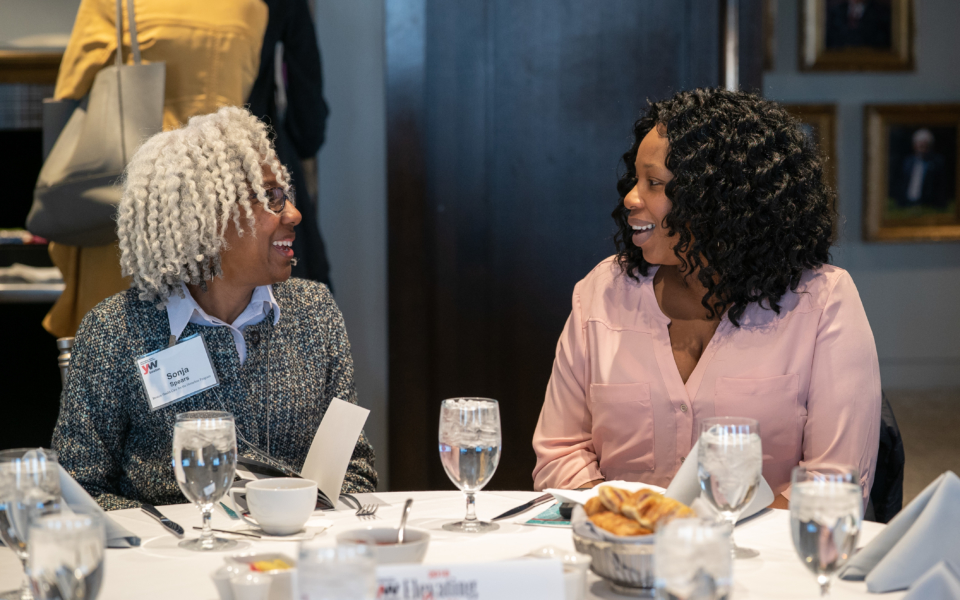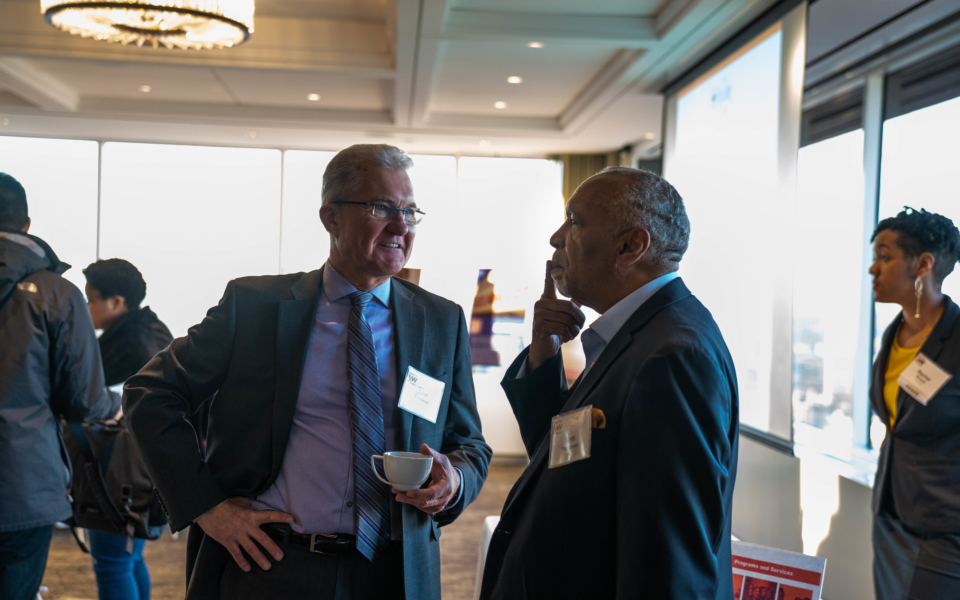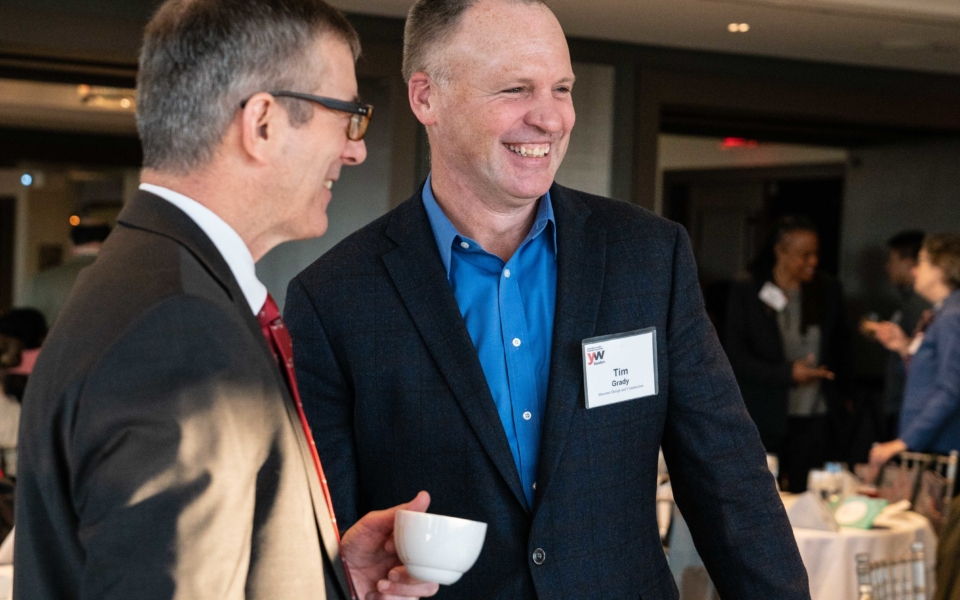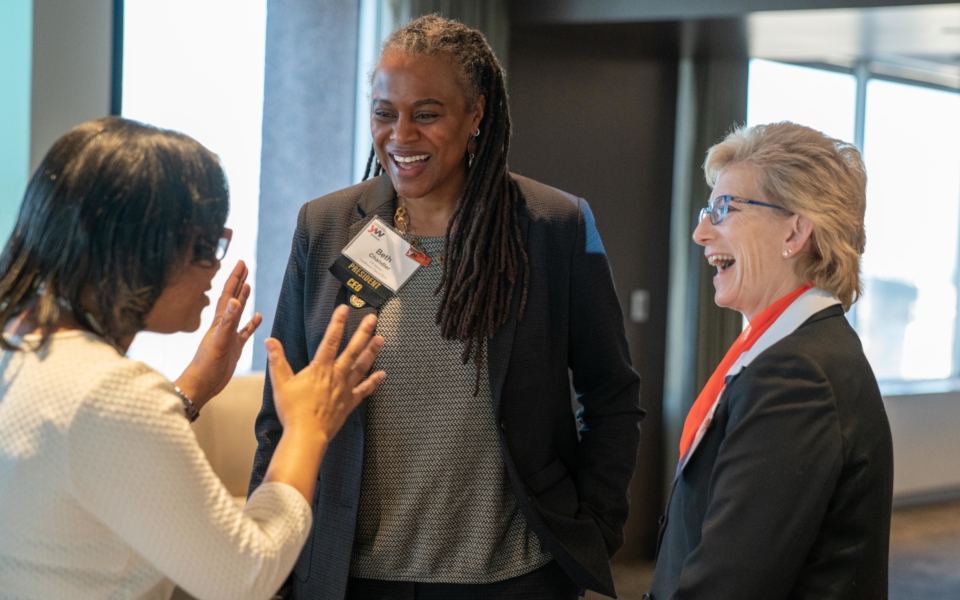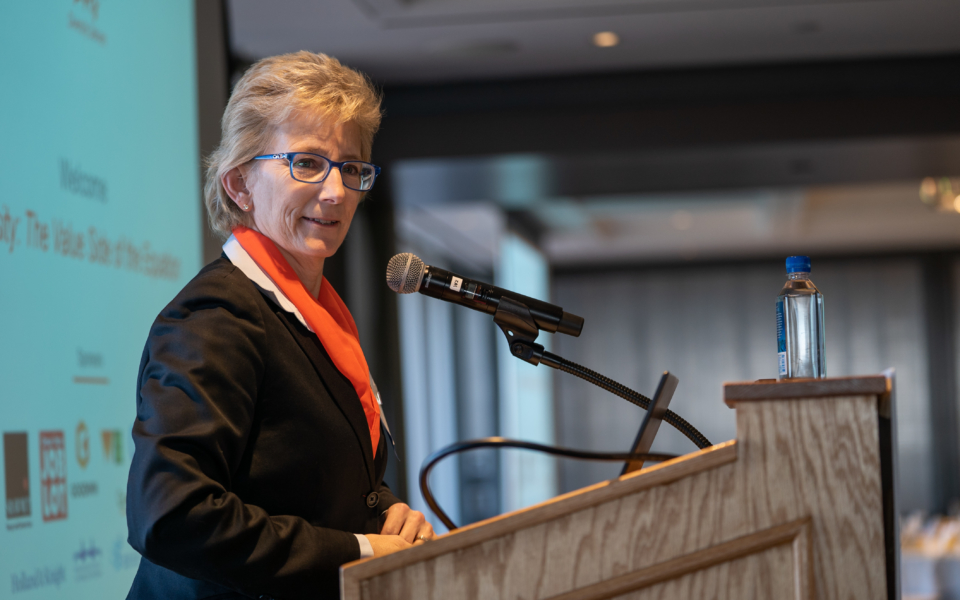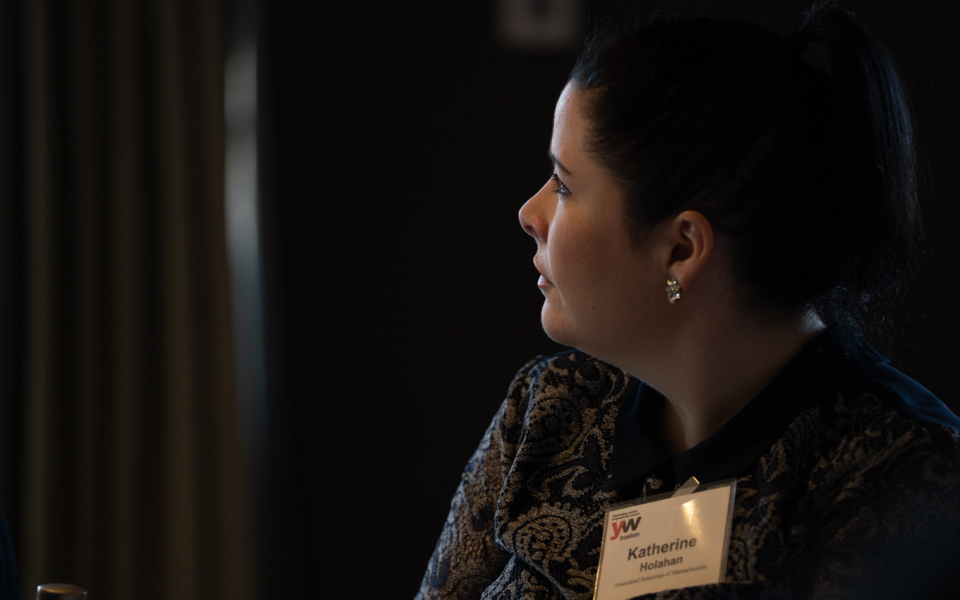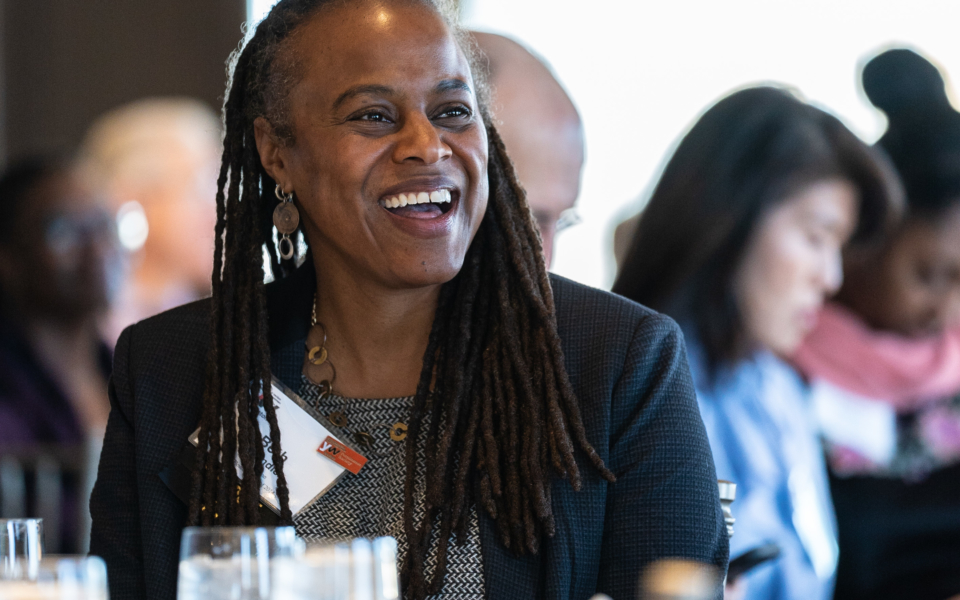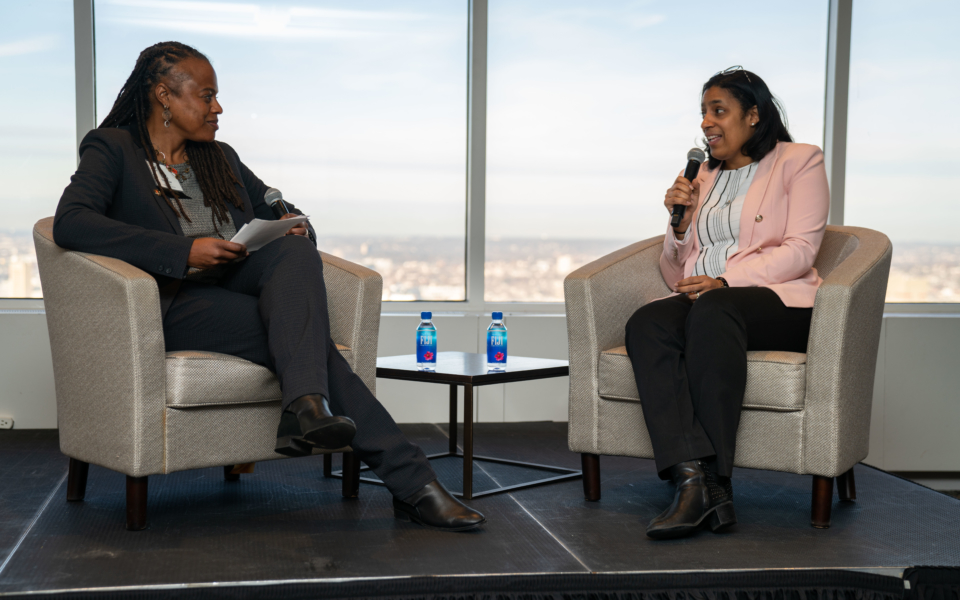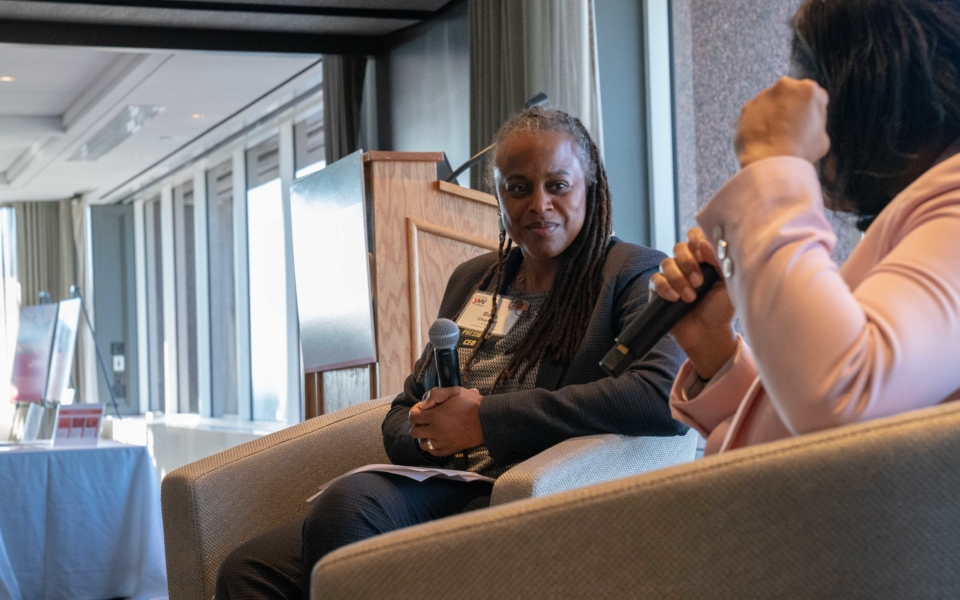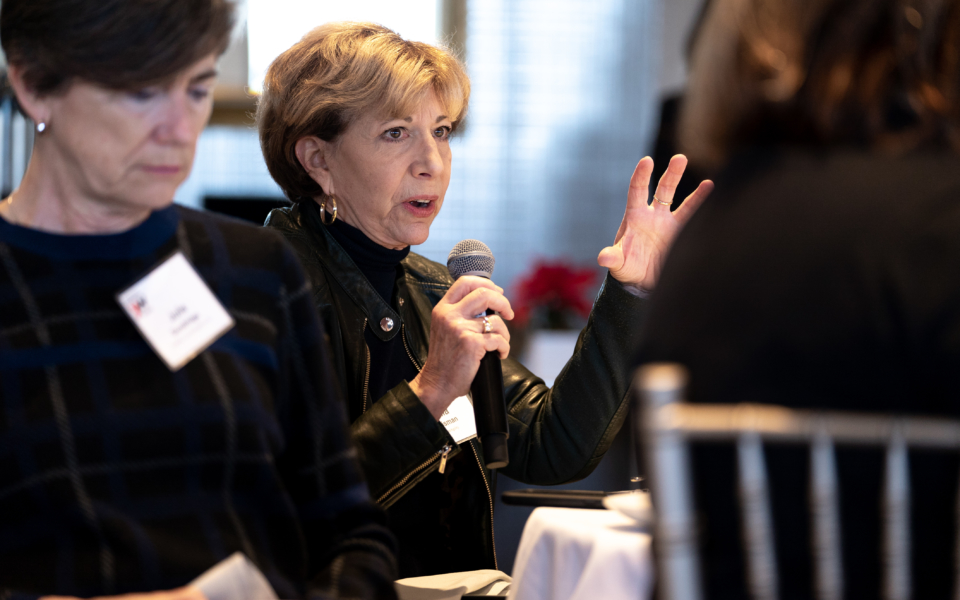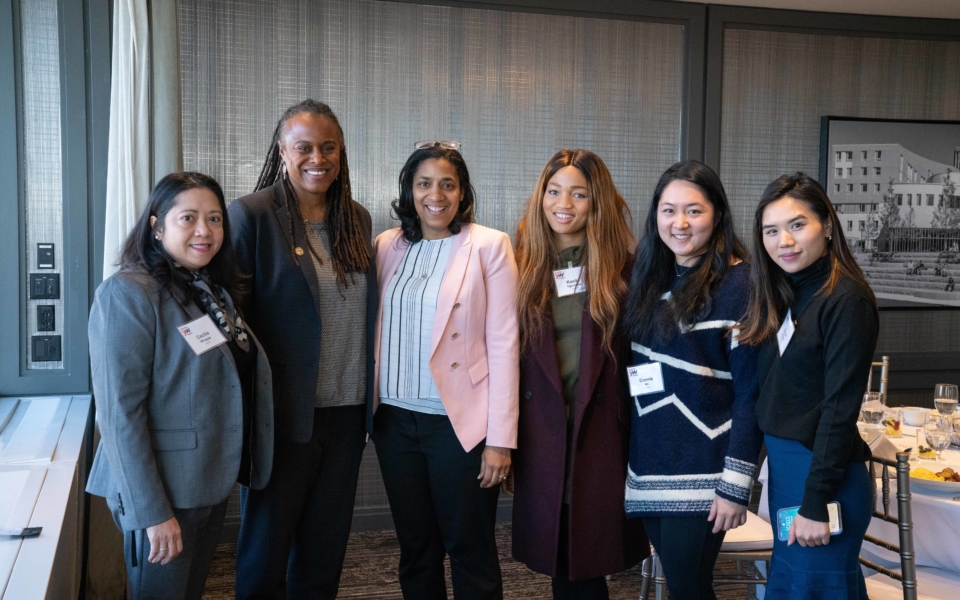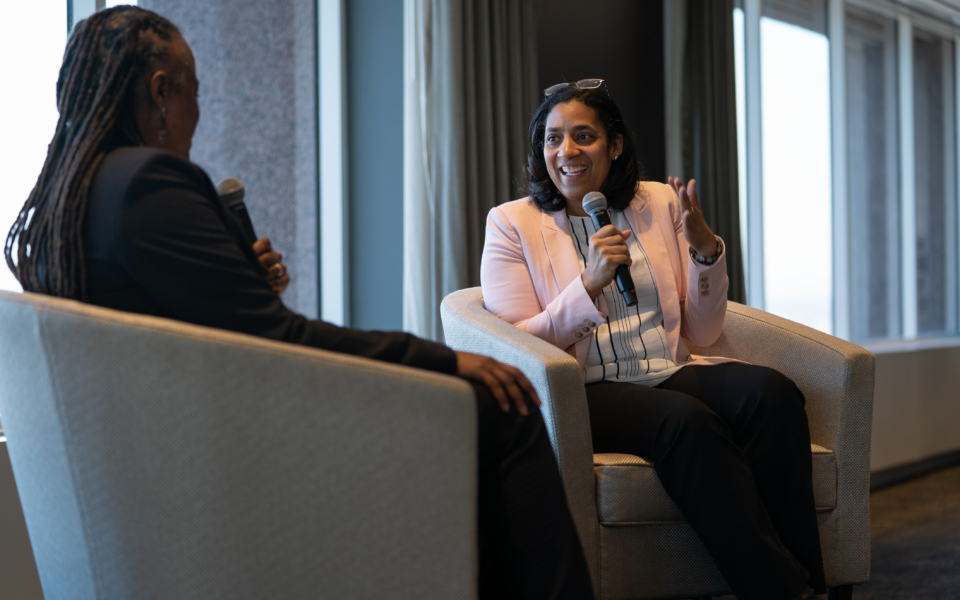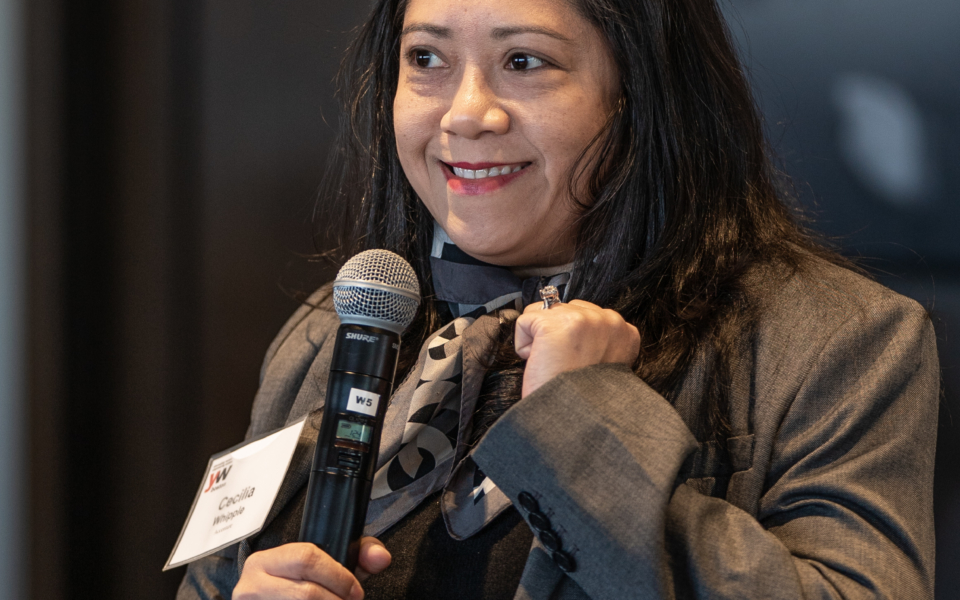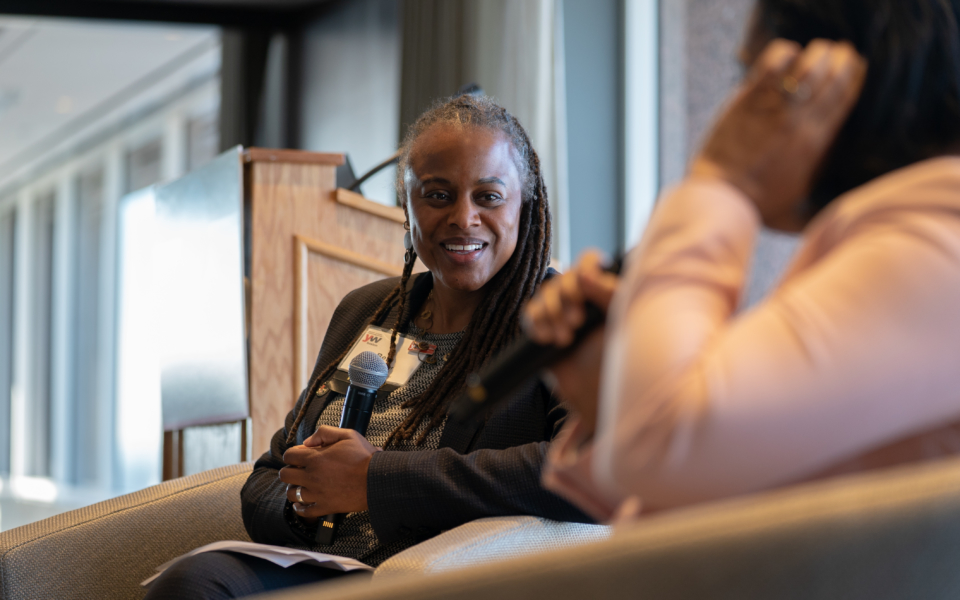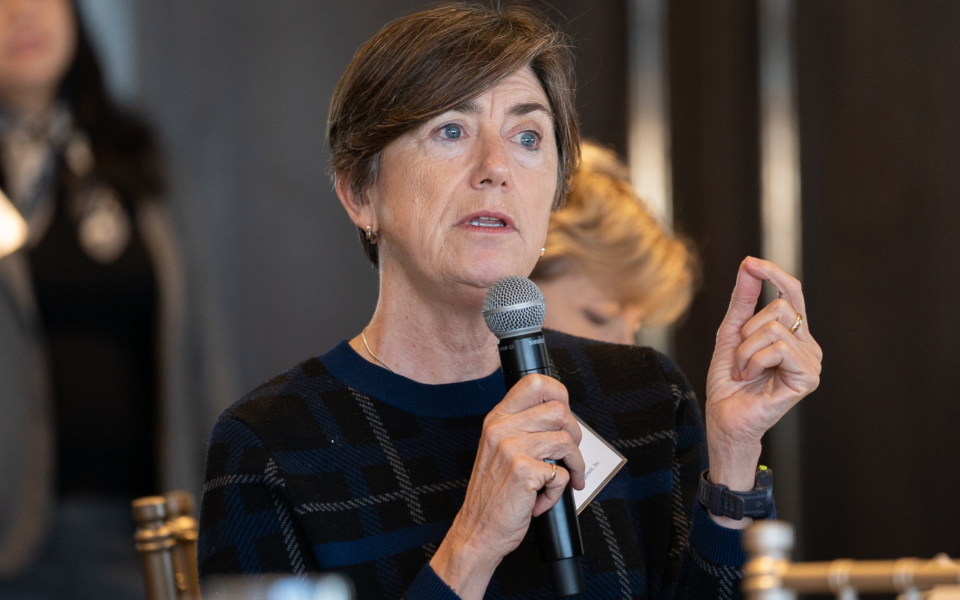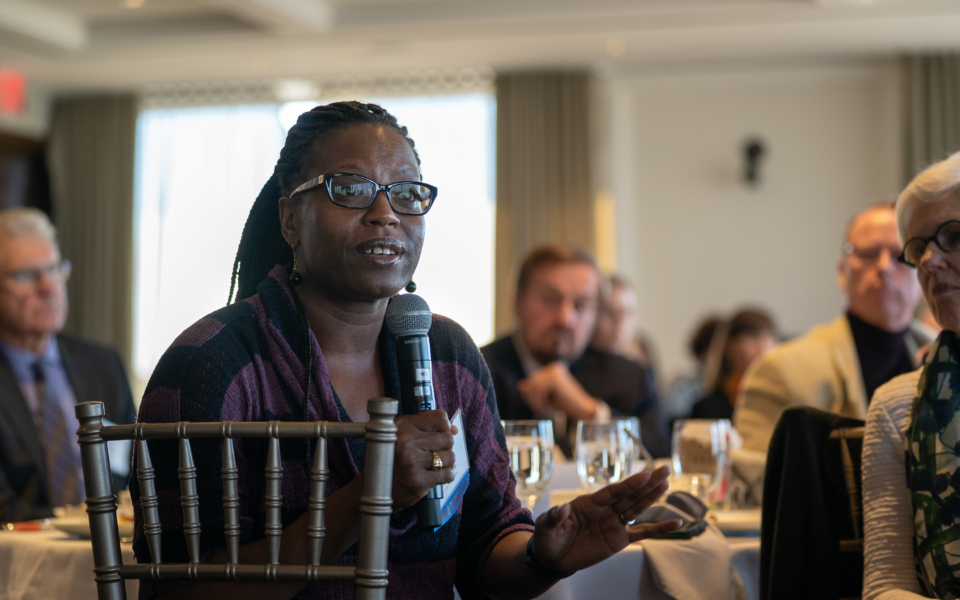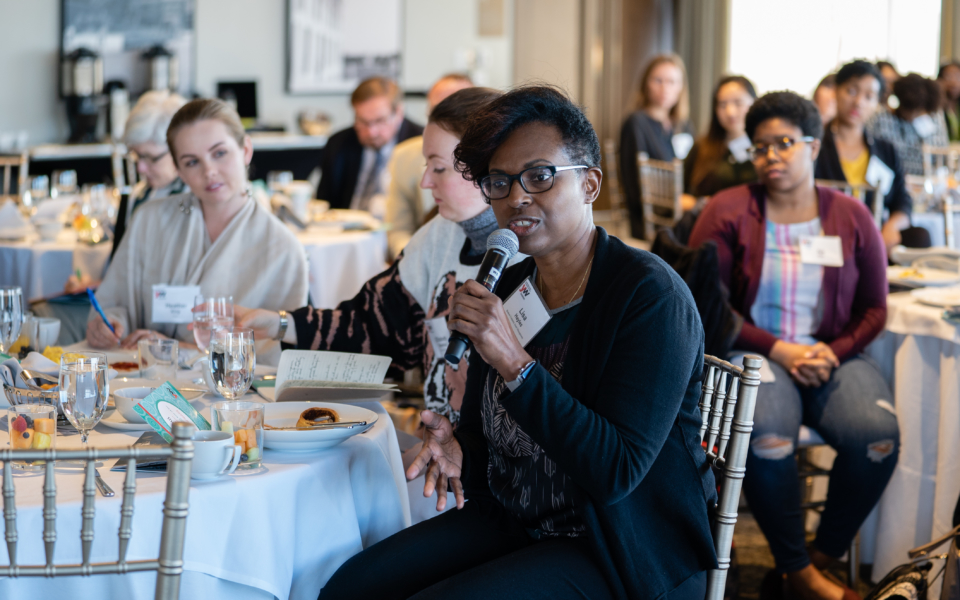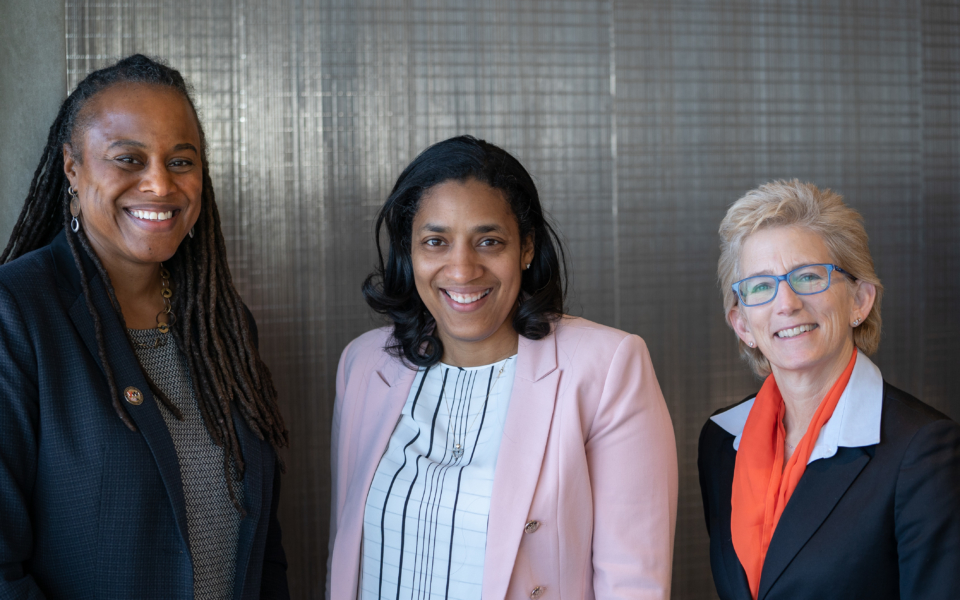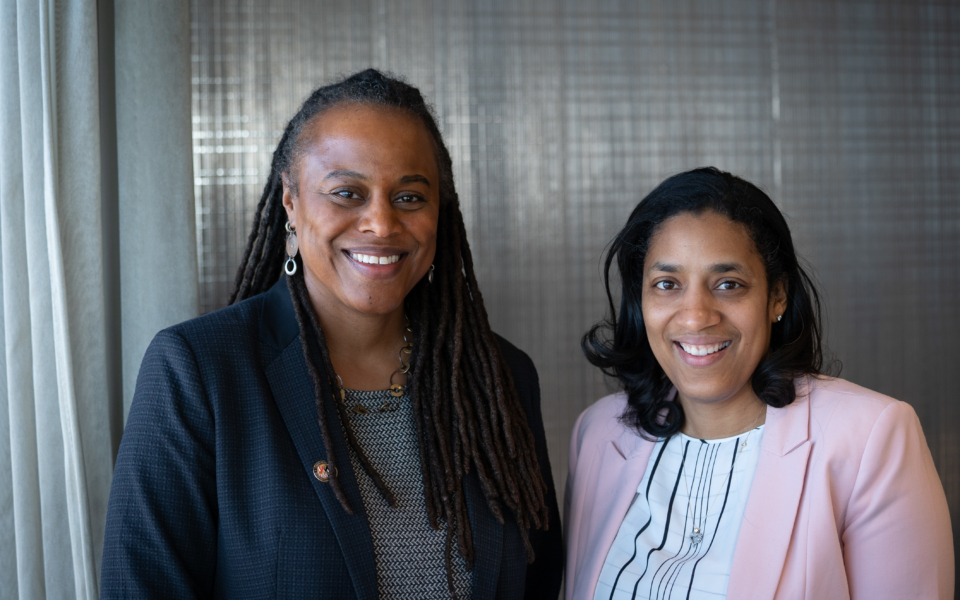A Key Lever to Growth – 5 Takeaways from Diversity: The Value Side of the Equation
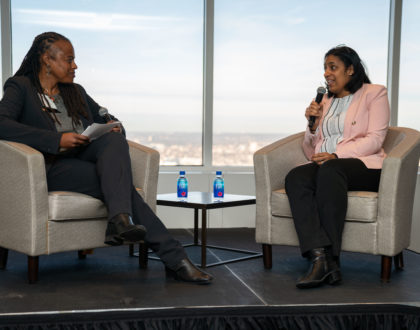
On Thursday, December 6, 2018, YW Boston hosted the second and final Elevating Lives event of 2018, Diversity: The Value Side of the Equation. Sara Prince, Partner at McKinsey & Company and based in Atlanta, joined YW Boston for the event hosted at the University of Massachusetts Club.
Prince presented on findings from McKinsey’s ground-breaking reports linking financial performance and levels of gender and ethnic diversity in a company’s leadership team, reports which she co-wrote. During her presentation, Prince polled the audience on their own understanding of diversity and work performance, which she used to debunk a number of myths. Following Prince’s presentation, she and Beth Chandler, YW Boston President and CEO, further explored the impact of diversity in the workplace during a fireside chat before taking questions from the audience.
Don’t miss out on the top takeaways from this event. Check out our 5 highlights from Diversity: The Value Side of the Equation below.
1) Not only do diverse teams perform better, there is a penalty for less diverse companies.
McKinsey & Company’s Diversity Matters research found that companies with greater diversity within their organizations are much more likely to outperform the national industry median. Specifically, they found that companies in the top quartile for gender diversity are 21% more likely to outperform those in the bottom quartile. Those in the top quartile for racial diversity are 33% more likely to outperform. As Sara Prince put it in her presentation, “More diverse teams have better, faster, more innovative decision making.”
On the flip side, “companies in the 4th quartile on both gender and ethnic diversity are more likely to underperform their industry peers financially,” signaling a penalty for those less committed to diversity.
You may ask yourself “why?” As Sara Prince spoke of in her presentation, the top five reasons diversity correlates with higher performance are: Diverse teams 1) attract the greatest talent, 2) make better decisions, 3) have better customer insight, 4) increase team satisfaction, and 5) improve the company’s global image and license to operate. As it turns out, “This is not just ‘If you opt-in, you get a bit more.’ This is ‘if you opt-out, you are leaving value on the table.’”
2) Women, particularly women of color, face setbacks early in their careers.
During her presentation, Sara Prince asked the audience “how long will it take for us to reach gender parity in Corporate America?” The poll asked audience members to choose between 5, 10, 25, 50, or 100 years. The largest number of participants (35%) chose 50 years. However, Prince revealed, it is likely to take closer to 100 years, and even that estimate may be optimistic.
People believe a great deal of misinformation about why women continue to not hold the same power as men in the workplace. For instance, it is untrue that women fall behind for taking time off for their families. In reality, men and women leave their jobs each year at the same rate. According to Prince, “There used to be a mindset that women just didn’t seek that senior level role. That has evolved over time, and ambitions levels are roughly equal, but women do face a more challenging work environment,” by receiving less support and experiencing microaggressions on a daily basis.
Gender and racial discrimination in hiring and promotion practices still remains. These forces create what Prince describes as a leaky faucet: as women, and particularly women of color, move up the ranks in a company, their percentage of representation dwindles. As Prince states, “What is interesting is that first level of promotion is where we see a material difference in what happens between women’s and men’s trajectory.” McKinsey & Company found that among entry-level corporate positions, white men hold 36% of positions, men of color hold 16%, white women hold 31%, and women of color hold 17%. However, when you jump down to C-suite positions, white men hold 68% of positions, with men of color holding 9%, white women holding 19%, and women of color holding 4%. Much of the drop off occurs between the entry level to manager and manager to senior manager/director promotions. Between those two promotions, women of color drop from holding 17% of positions to just 8% of positions. Overall, black women are 40% less likely than white men to be promoted to manager. Once these early institutional setbacks occur, women, people of color, and especially women of color find themselves facing an uphill battle toward executive management roles.

Data from McKinsey & Company, as presented by Sara Prince.
3) Diversity and inclusion are not synonyms.
The terms diversity and inclusion are so often said together that many assume they mean the same thing. However, during the event, both YW Boston Board Chair Mim Minichiello and Sara Prince quoted Vernã Myers’ analogy, “Diversity is being invited to the party; inclusion is being asked to dance.”
As defined more specifically in Prince’s presentation:
Diversity: “Who our colleagues represent. The share of individuals representing historically underrepresented identities. Measured in metrics on representation and advancement.”
Inclusion: “How [these colleagues] feel. The degree in which colleagues perceive they are accepted and respected. Measured through attitude and experience questions in satisfaction surveys.”
McKinsey & Company has made the intentional decision to reverse the typical order of “Diversity and Inclusion” and instead say “Inclusion and Diversity.” Beth Chandler asked Sara about this during their discussion and she responded, “We started out saying DE&I (Diversity, Equity, and Inclusion) like most organizations. We made a really intentional decision to evolve our language because we understood as we did this research the actual impact from inclusion. It is the dynamic by which we hear people and allow people to participate, collaborate, and contribute that actually generates the value from having different people around the table.” Despite many organization’s sole focus on diversity, Prince states “You don’t get the value if you don’t get the inclusion part right. This isn’t just ‘Go out and get a bunch of people to show up.’ It is actually how you change the culture and operating model of your company.”
Inclusion doesn’t look the same at every organization, it is dependant on the needs of employees or the populations served, for instance. This is why Prince recommends that each team defines inclusion for themselves and decide together why it matters to them. This is why knowing how diversity and inclusion tie to business outcomes is so important. As she states, spending time and energy on inclusion “is a really hard thing to do without attaching it to value adding. Who goes on this journey without knowing that dollars will flow?”
4) Inclusion must be integrated into every aspect of your organization.
McKinsey & Company and Sara Prince found that the number one pitfall to successful inclusion and diversity efforts is uneven engagement across the organization. When some people or teams are more committed than others, it puts the onus on a few individuals who feel like they must solve it all. To prevent this, successful team efforts include strong leadership involvement and an integrated inclusion plan throughout all areas of the organization.
As Prince states, “In reality there isn’t a recipe,” but she has found that a strong plan for inclusion revolves around what Prince calls the ‘inclusion mindset.” Thinking of inclusion as a mindset allows corporations to “Fully engage colleagues from all backgrounds and perspectives to drive distinctive solutions.” The four main pillars of adopting this mindset are:
1) Inclusive Networks – expanding affinity spaces, connecting colleagues, and supporting external communities
2) Inclusive Recruiting – using best practices and innovative solutions to attract a diverse team
3) Inclusive Advancement – providing everyone the same access and support to progress
4) Inclusive Retention – Supporting initiatives, programs, and policies to retain diverse profiles
Each of these strategies must be promoted by leadership and funnel back each team’s overall goal of inclusion. As Prince explains, “This has to be owned by the top and driven by the top. That is not to say that grassroots efforts don’t work. Those can help because what they do is help make it a priority for a senior leader. What was true for absolutely every company we saw in the top quartile, the CEO owned it and understood how and why inclusion and diversity mattered and articulated it to their team to make it happen.” One step CEOs and senior leaders can take is creating and encouraging metrics around inclusion, because “We all know that if you don’t measure it, it doesn’t get done.”
One way for everyone to be involved is through a tactic Prince calls ‘nudge theory.’ Putting this theory into practice, Prince explains, means identifying “Instances where you can prompt the behaviors you are trying to see in daily life” so that not all change needs to be taken within a program or defined agenda item. This can be, “the way you ask a question in a meeting or invite someone in a conversation, to try in small instances to reinforce these behaviors. This is particularly important in middle management. Giving people little email pointers to allow them to put something into action.” As Beth Chandler pointed out, this is a major focus of YW Boston’s LeadBoston program, which prepares middle managers to act out inclusion in their daily work lives.
5) Organizations must push through discomfort.
Focusing on inclusion can feel like a hard task for organizations just beginning to take it on. There will be learning curves with discomfort along the way. This is why Sara Prince recommends focusing on authenticity, which allows teams to be transparent and reflect on what works or doesn’t. To keep inclusivity from falling on a few proactive individuals, she recommends introducing policies and formal processes to monitor and promote inclusiveness.
As pointed out by Prince and audience members who asked questions, individuals with existing workplace power and privilege are usually the most resistant to inclusive practices. What holds people back is “discomfort tackling what feels like a social, moral, personal issue, and not quite making the connection of why this is a lever for growth.” This defensiveness makes “People feel more comfortable picking it apart than they do being willing to challenge where they are. It is hard to be courageous in that way because it is so personal for some folks.”
Prince also recommends role-modeling inclusiveness, such as through the nudge theory explained above. As people see others speaking up about, recommending, or modeling better practices, individuals will feel empowered to do the same. Prince told the audience a useful story about how she pointed out to her white male colleague that his meeting practices were not promoting inclusivity. The team was doing all of the work they needed to do, but was ultimately struggling. So, she told us, “I sat in on one of their meetings, and after having done that and realizing how ineffective they were, I went to the leader and said ‘Hey you asked us to think about this issue. I’m going to do some fact gathering in your next meeting.’ In the next meeting I literally wrote down everyone who spoke, how long they spoke for, and what happened as a result of what they said. I synthesized the results for the leader and said ‘You spoke 60% of the time in a meeting where you were meant to listen to recommendations from your team. Your perceived number two, who is another tenured white male, spoke 25% of the time mostly to agree with what you said. Most of the rest of the time was largely split among the others. Whenever the woman spoke, she never finished a sentence. The Hispanic man did not speak at all. The Asian man was basically only speaking in contradiction to the #2, but got shut down every time. Everybody else did not talk. No decisions were made in a decision making meeting.’ We spoke about how to facilitate further on and how to prepare people for participation. We had additional meetings to coach through this. After that, the team became much more functional and their decisions became better.”
This story reveals the ways in which team members can help each other stay accountable. As Prince stated, “Giving that leader the insight on how and where he was not including on his team, and the impact it was having on their work, genuinely was a transformation on their team.” People may feel worried about receiving feedback, but at the end of the day, the facts are the facts. These facts give managers the opportunity to run better teams and become more effective.
One audience member pointed out that, “We don’t have to make a business case for white men,” and stated that she worries that connecting inclusion to financial performance puts undue onus on people of color and women to make cases for themselves. Prince stated she understood where the audience member was coming from, but suggested that, “At the end of the day we are all collectively trying to figure out how we create a world that is more equitable and inclusive and creates the best outcome for the greatest number of humans that it possibly can…Organizations have been doing this long before there was a business case for it. They did it because it was culturally congruent to who they were and their values and morals as human beings, and that is wonderful. There are people who are not reached by that story, who need to be compelled by the facts by the bottom line, and I don’t want that to be a reason for why they don’t act.”
There are many reasons to focus on diversity and inclusion in your organization. Everyone will be convinced by a different argument, but showing the impact diversity has on financial performance could convince those who struggle to see its relevance in the workplace. As Prince explained while wrapping up her presentation, “You can be avoiding the penalty or capturing the upside. Either way, you are leaving value on the table if you don’t take advantage of this lever” – inclusion.
***
Thank you to Sara Prince, our sponsors, and everyone who attended Diversity: The Value Side of the Equation.
- To make inclusion a key goal for your organization, learn more about YW Boston’s LeadBoston and Dialogues on Race and Ethnicity programs.
- You can find Sara Prince’s presentation “Delivering through Diversity” here.
- We could not host such enriching conversations without your support. Please consider donating to help us reach our 2018 fundraising goal.


